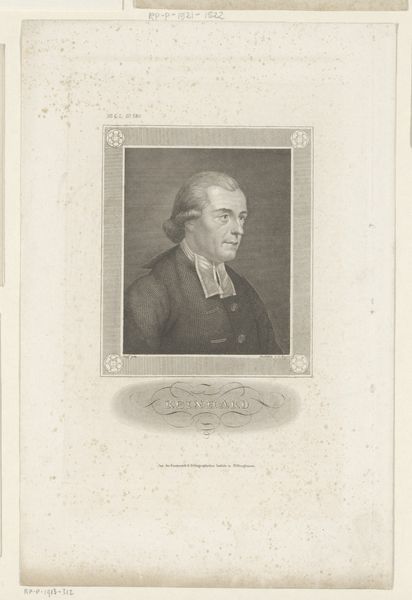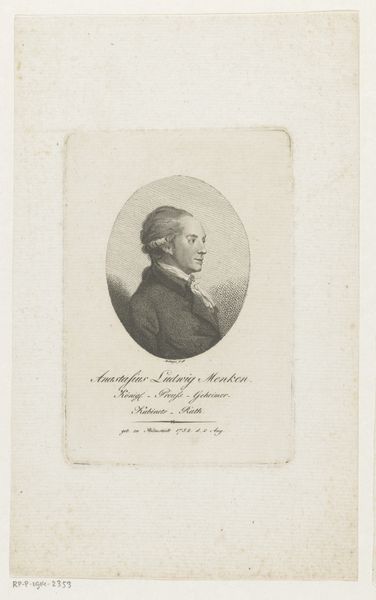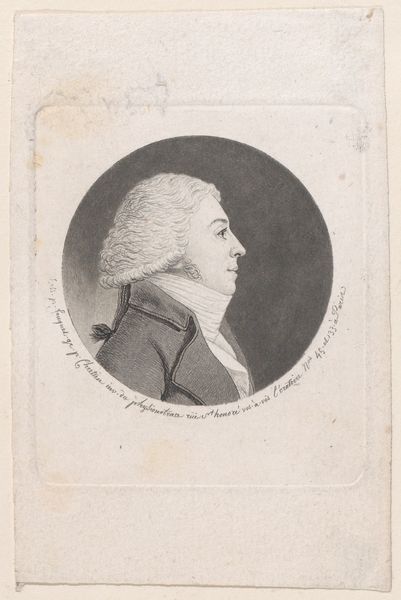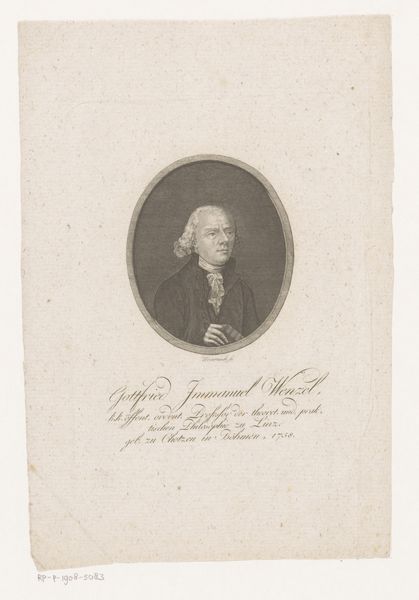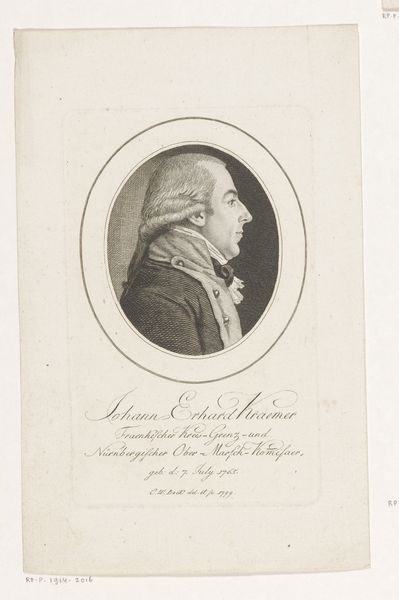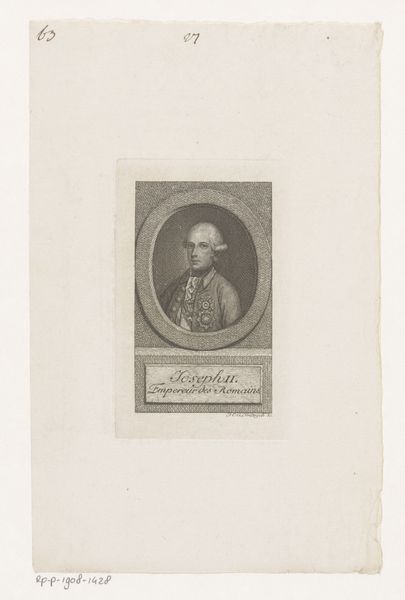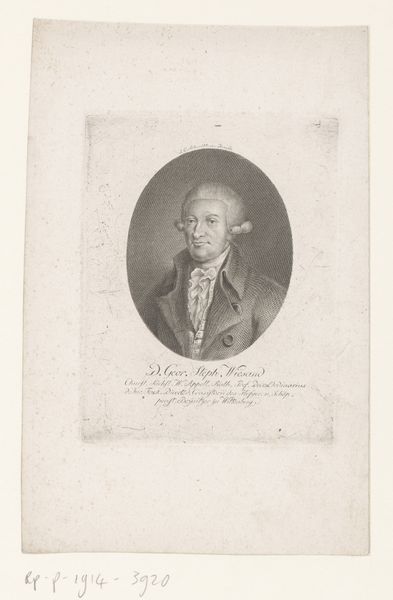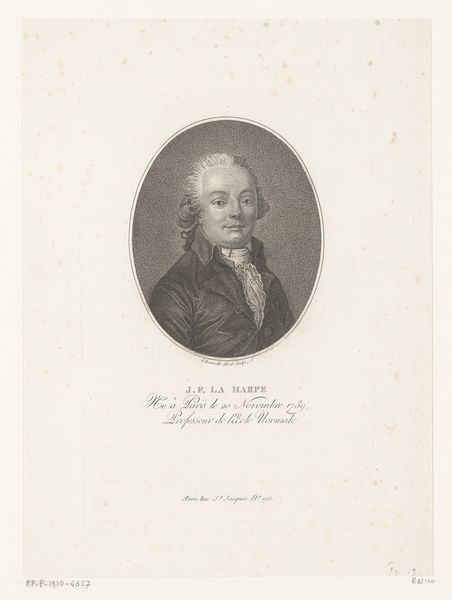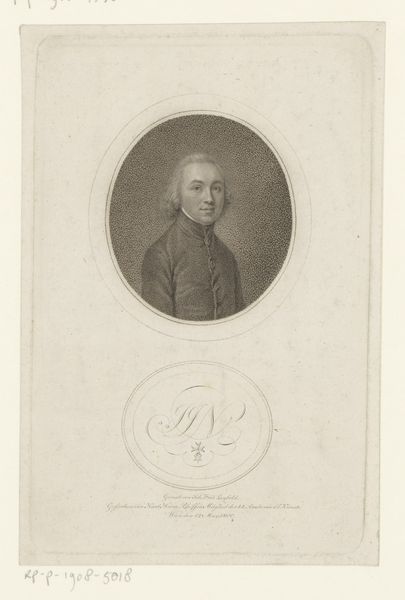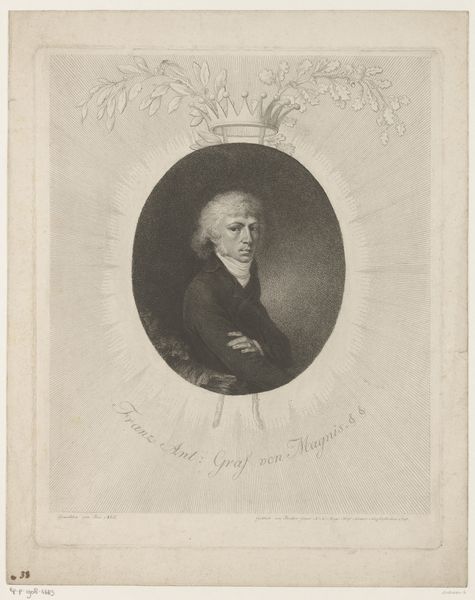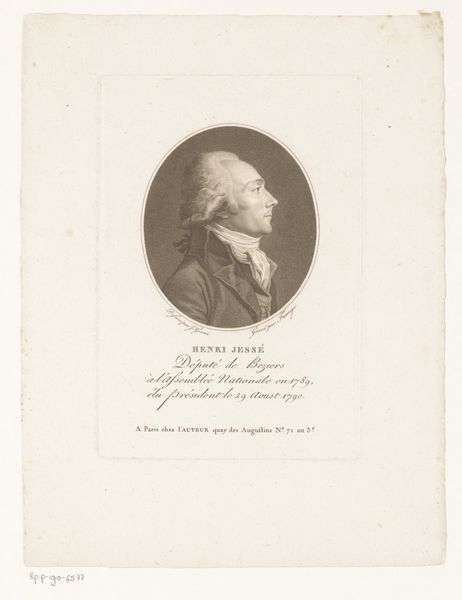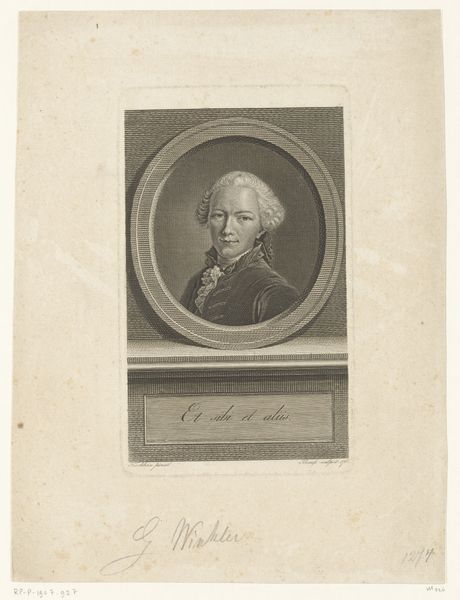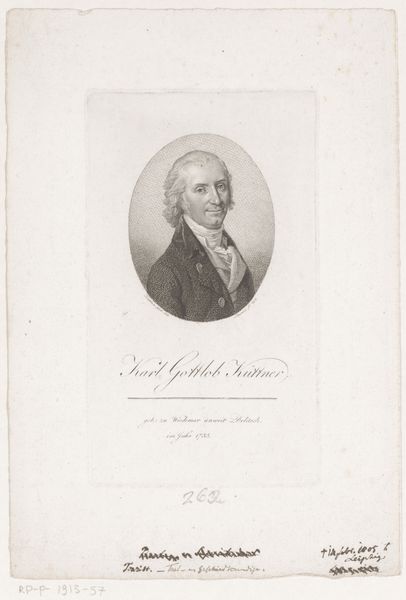
print, etching, paper, engraving
#
portrait
#
neoclacissism
# print
#
etching
#
old engraving style
#
paper
#
engraving
Dimensions: height 169 mm, width 113 mm
Copyright: Rijks Museum: Open Domain
Editor: This is a print of Johann Karl Friedrich Witting made in 1793 by Johann Friedrich August Clar, employing etching and engraving techniques on paper. The somber tone, combined with the subject's rather severe expression, gives the work a sense of formality and perhaps even a hint of the anxieties of the late 18th century. What strikes you when you look at it? Curator: The oval frame immediately signifies this as a work deeply embedded in classical traditions. Observe how the subject's profile, framed within this shape, references ancient Roman portraiture, echoing the gravitas and importance associated with historical figures. Notice how the crisp lines and precise details, achieved through etching and engraving, are typical of neoclassicism's return to order and clarity, following the more ornate styles of the Rococo. But how does the inscription of his name play into this? Editor: Well, the flourish of the script is a little softer, less severe. Curator: Exactly. That contrast is intriguing. While the portrait itself aims for timelessness through its classical references, the individualized, almost ornamental lettering hints at the unique identity of the sitter – a tension between the universal and the particular that defined much of 18th-century thought. What emotions are conveyed through his clothing? Editor: Compared to today's fashion it is more structured and rigid. It seems to suggest formality but maybe a sort of barrier against showing much emotion. Curator: Yes! It presents an image of restraint, mirroring the social expectations and values of the time. Consider it as a piece of carefully constructed self-presentation intended for posterity. What is the purpose of representing himself in this way, and what values did this portrait immortalize? Editor: I hadn't thought of it that way before – the image as a statement about status and enduring values. Thanks, this makes the print so much more insightful. Curator: And for me, seeing it through your eyes helps remind me of art's immediate accessibility and timeless ability to resonate.
Comments
No comments
Be the first to comment and join the conversation on the ultimate creative platform.
